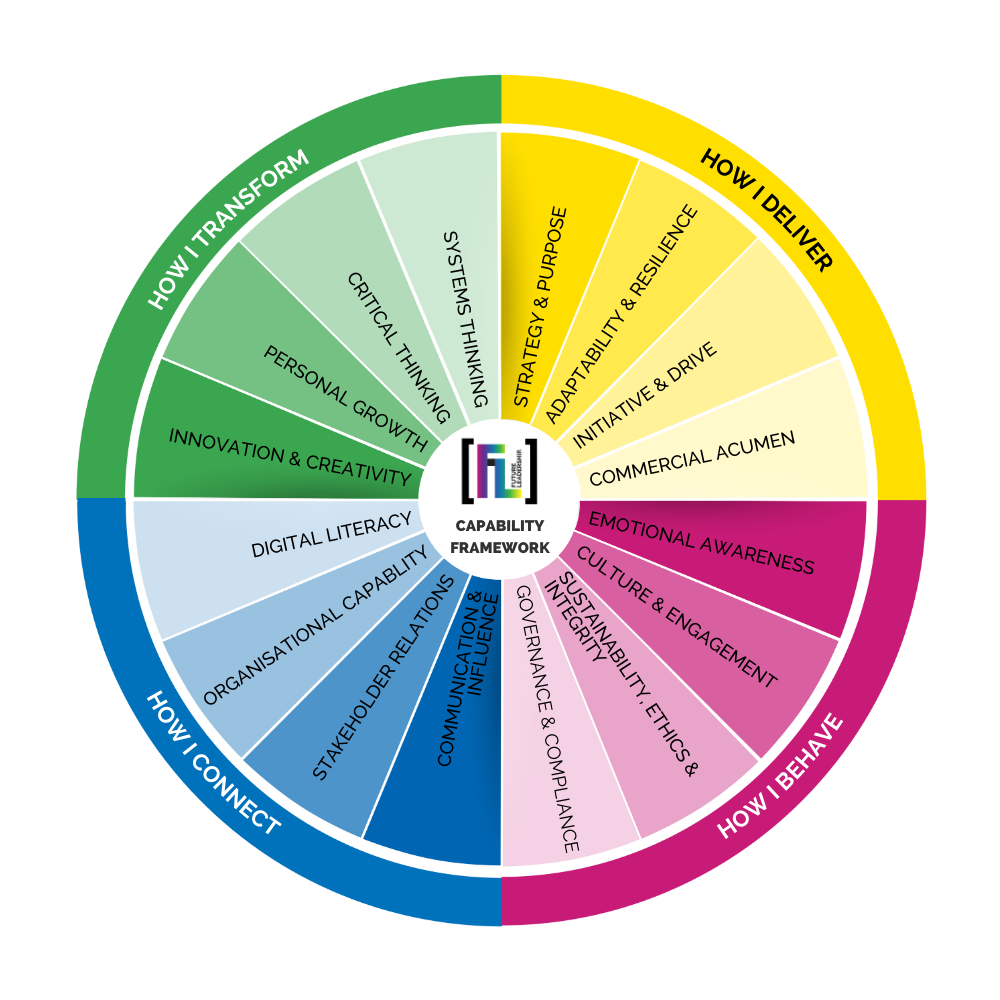
What does For Purpose leadership look like as we navigate AI Opportunities and Risks?
After two decades supporting For Purpose boards and organisations through leadership transitions, executive search, and capability building, I’ve witnessed a fundamental shift in how the sector approaches leadership development in the digital landscape. With its unique tension between mission and metrics, grant-driven uncertainty, and volunteer workforce complexity, For Purpose organisations require a sophisticated response to leverage the AI opportunity truly.
The potential upside is undeniable. AI has the opportunity to streamline operations, empower teams, and amplify impact. Yet For Purpose leaders know the question isn’t simply whether to adopt AI, but how to do so in a way that upholds the sector’s fundamental commitment to trust, transparency, and community welfare.
The Upside of AI
Already, 44% of Australian NFPs are leveraging generative AI for marketing and communications, helping organisations connect with donors and stakeholders in more meaningful ways. Practical implementations span from fundraising automation and donor engagement analysis to internal knowledge management systems, essential tools for organisations balancing high workloads with limited administrative resources.
The enthusiasm is measured but growing. Employees report increasing comfort with AI tools, with 76% using them daily for drafting content and administrative tasks. Nearly half of organisations report positive operational impacts from generative AI, yet many remain uncertain about long-term outcomes due to underdeveloped measurement frameworks.
The Downside of AI
Beneath this cautious optimism lies a significant gap. While operational experimentation flourishes, strategic adoption lags dramatically. Only 3% of NFPs actively invest in significant AI projects, reflecting sector-wide hesitancy to fully embrace digital transformation at scale.
The reluctance isn’t unfounded. Data security, privacy, and legislative complexities loom large, cited by up to 64% of NFPs as top concerns. The unique sensitivity of the sector, dealing with vulnerable populations, and upholding donor relationships, demands an approach where trust and quality control underpin every deployment.
These concerns highlight a fundamental truth: AI adoption in the For Purpose sector cannot follow the same playbook as corporate implementations. Purpose-driven organisations require a framework that prioritises ethical stewardship alongside operational efficiency.
Resources for Leaders adopting AI in For Purpose organisations
Let’s cut to the chase, digital literacy is no longer an optional leadership capability. Too often, I see boards over-index on sector experience and values alignment while under-weighting on requisite future capabilities. They hire the passionate advocate who’s “lived the mission” but struggles with technology adoption, complex stakeholder management, or difficult conversations about performance. Six months in, you have a beloved leader who can’t lead. So, if your organisation is looking to adopt AI, here are some of the key capabilities you may want to consider.
Capability: Sustainability, Ethics, Integrity | AI Outcome: Transparency First
For Purpose organisations trade on trust and accountability. Adopting AI with unwavering commitment to transparency ensures that stakeholders (donors, beneficiaries, team members, and partners) remain confident in organisational decisions. This means clearly communicating how AI systems are used, what data they rely on, and the decisions they inform. Openly sharing successes, challenges, and lessons learned not only reinforces trust but sets a standard for ethical innovation across the sector.
Resource: Australia’s AI Ethics Principles
Capability: Strategic Initiative | AI Outcome: Clear Intent
AI should never be adopted for technology’s sake alone. Beginning with human-centred design is a practice long championed by the For Purpose sector, and especially applies to AI architecture. The use of AI must be guided by clear, mission-driven intent. For Purpose organisations face complex challenges, including resource constraints, data management needs, and impact measurement requirements. By thoughtfully identifying areas where AI can genuinely add value, such as automating administrative tasks, analysing datasets for program evaluation, or personalising supporter engagement, organisations ensure technology serves strategic goals rather than creating a distraction.
Resource: Technical Standard for the use of Artifical Intelligence
Capability: Emotional Awareness | AI Outcome: Data Inclusivity
True care is essential when deploying AI in contexts affecting vulnerable individuals and communities. This means minimising bias, ensuring appropriate consent, and ensuring AI tools remain accessible and inclusive. Purpose-driven leaders must engage with their communities to understand concerns, listen to feedback, and adjust approaches accordingly. Rigorous ethical frameworks and ongoing team training helps organisations use AI responsibly, always keeping the welfare of those they serve at the forefront.
Resource: AI Data Intelligence Guide
Capability: Governance and Compliance | AI Outcome: Data Privacy and Security
In an era where organisations collect, store, and process unprecedented volumes of personal and sensitive information, implementing robust data privacy and security measures isn’t optional, it’s foundational to organisational integrity and public trust. A single data breach can destroy years of reputational capital, trigger regulatory penalties, expose vulnerable individuals to harm, and undermine stakeholder confidence irreparably. Beyond compliance with frameworks like GDPR or the Australian Privacy Act, effective data governance demonstrates respect for the people you serve and protects the operational continuity of your mission.
Resource: Data Privacy Checklist
AI Capability and the Bottom Line
When building the leadership capability to implement AI well, executive search is only one tool in your talent capability strategy. The organisations thriving in today’s For Purpose landscape are those who:
- Assess capability systematically using frameworks and diagnostics, not gut feel
- Build internal talent as proactively as they search externally
- De-risk transitions with structured onboarding and coaching support
- Leverage interim talent for stabilisation and capability transfer
- Measure what matters: time-to-effectiveness, stakeholder confidence, strategic delivery, succession readiness
Let’s be honest, For Purpose organisations can’t afford to miss out on the upside of AI, but they also cannot afford to get it wrong. In an era of funding volatility, mission scrutiny, and digital acceleration, leadership strategy is the key factor unlocking organisational strategy.
The question isn’t whether you’re investing enough in AI capability; it’s whether you’re investing strategically enough in the leadership capability to power it.
Kate Wheeler partners with For Purpose boards and executives on talent strategy, executive search, and leadership capability building. With 20+ years supporting the For Purpose sector through governance challenges, transitions, and strategic growth, she brings practical insight grounded in real-world impact.


